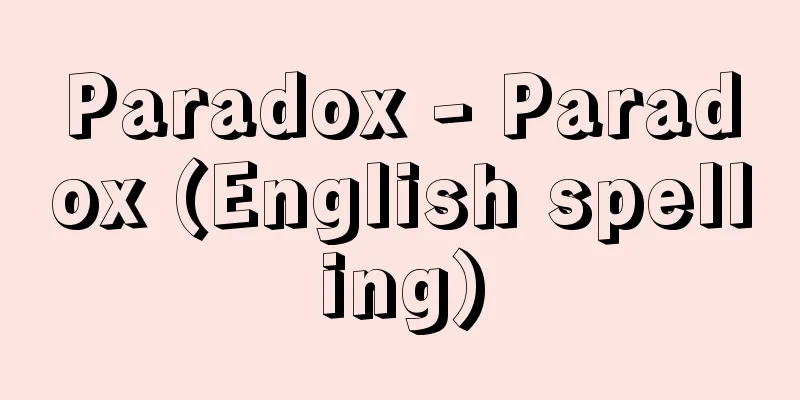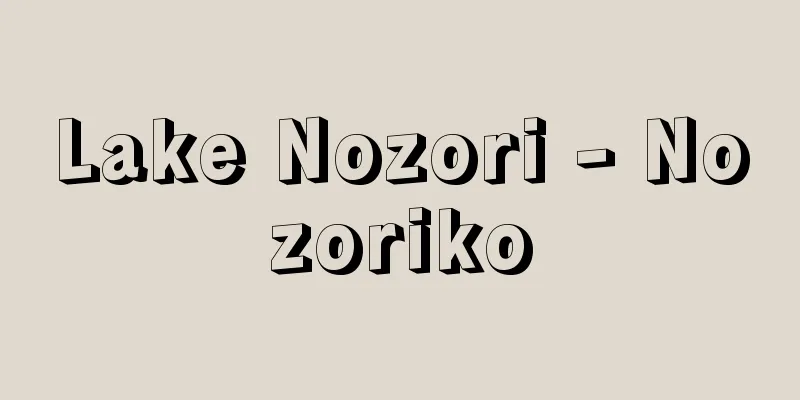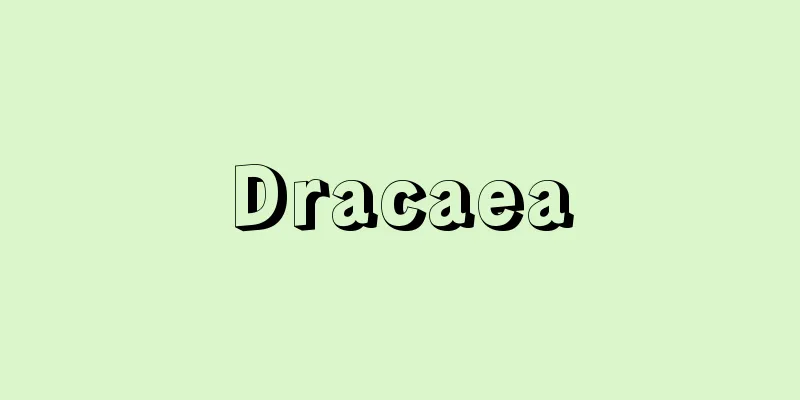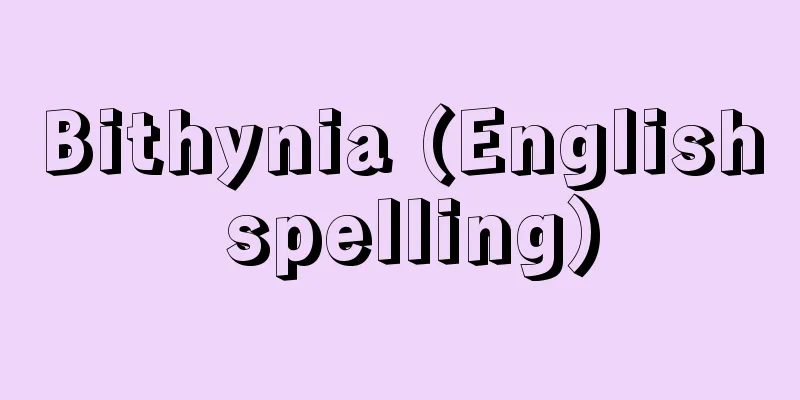Paradox - Paradox (English spelling)

|
Suppose a proposition and its negation are asserted with arguments that seem to be logically equivalent. If it is not possible to clearly point out an error in the reasoning that leads to the conclusion that these two propositions are true, then these two propositions are called a paradox, a contradiction, or a contradiction. Here are some famous examples: The paradox of Epimenides (c. 6th century BC) is expressed in various ways, but for example it is the proposition "A certain Cretan said that the Cretans are liars." If the minor proposition "The Cretans are liars" is true, then the Cretan lied, and if the minor proposition is a lie, then the Cretan did not lie, and either way the whole proposition fails. There are several paradoxes by the Elea philosopher Zeno (5th century BC), but here are two of them. (1) Even if the swift-footed Achilles chases a tortoise, he cannot catch up with it. This is because when Achilles reaches where the tortoise was, the tortoise has moved forward some distance. When Achilles next reaches where the tortoise was, the tortoise has moved forward some distance again. Therefore, Achilles cannot catch up with the tortoise. (2) A flying arrow occupies a fixed position at each moment. In other words, the arrow is stationary in that position at each moment. Therefore, the arrow cannot move. Next are paradoxes about the concept of sets. (1) G. Cantor's paradox (1899). Suppose there is the proposition "S is the set of all sets." If S is the set of all sets and T is the set of all subsets of S, then the cardinality of T is greater than that of S. At the same time, since T ⊂ S (T is a subset of S), the cardinality of T is not greater than that of S. Therefore, this proposition does not hold. (2) B. A. W. Russell's paradox (1903). "A set of sets that does not contain itself as an element." Let N be the set of all sets that does not contain itself as an element. In this case, if N∈N, then NN is derived, and if NN is derived, then N∈N is derived, which leads to a contradiction. Here, a∈A and aA respectively represent "a is an element of set A" and "a is not an element of set A." Richard's paradox (1905) is also famous, and there are many of them. One of them is the paradox that states that "the smallest natural number that cannot be defined in 100 characters or less" is actually defined in 100 characters or less by this sentence, and is known as the paradox of Epimenides. [Toshio Nishimura] Source: Shogakukan Encyclopedia Nipponica About Encyclopedia Nipponica Information | Legend |
|
ある命題とその否定命題が、ともに論理的に同等と思われる論拠をもって主張されているとする。これらの二つの命題が成り立つと結論する推論のなかに誤りが含まれていることを明確に指摘することができないとき、これら二つの命題を、パラドックス、逆理または逆説という。以下にその有名な例をあげる。 エピメニデスEpimenidesのパラドックス(前6世紀ごろ)は、表現はいろいろあるが、たとえば「クレタ人はうそつきであるとあるクレタ人はいった」という命題をいう。「クレタ人はうそつきである」という小命題が正しければそのクレタ人はうそをいったことになり、小命題がうそであればそのクレタ人はうそをいっていないことになり、いずれにしても全体の命題は成立しない。 エレアの哲学者ゼノンのパラドックス(前5世紀)は数個あるが、そのなかの二つをあげる。(1)俊足のアキレスがカメを追いかけても、カメに追い付くことはできない。なぜなら、アキレスが元のカメのいた所まできたときには、カメはなにがしか前進している。次にまたアキレスがそのときカメのいた所まできたときには、カメはまたなにがしか前進している。したがって、アキレスはカメに追い付くことはできない。(2)飛んでいる矢は、各瞬間において一定の位置を占める。すなわち、矢は各瞬間においてその位置で静止している。ゆえに矢は運動することができない。 次は、集合概念についてのパラドックスである。(1)G・カントルのパラドックス(1899)。「Sはすべての集合の集合である」という命題があるとする。Sをすべての集合の集合、TをSの部分集合の全体のつくる集合とすれば、Tの濃度はSの濃度より大きい。同時にT⊂S(TはSの部分集合)であるから、Tの濃度はSの濃度より大きくない。したがって、この命題は成立しない。(2)B・A・W・ラッセルのパラドックス(1903)。「自分自身を元として含まない集合の集合」。自分自身を元として含まない集合の全体のつくる集合をNとする。このとき、N∈NとすればNNが、NNとすればN∈Nが導かれて矛盾がおこる。ここで、a∈A,aAはそれぞれ、「aは集合Aの元である」「aは集合Aの元でない」を表す。 また、リチャードJ. A. Richardのパラドックス(1905)も有名で、いろいろあるが、その一つは「100字以内で定義できない最小の自然数」は、現にこの文によって100字以内で定義されているという種類の逆理で、エピメニデスの逆理が伝承されている。 [西村敏男] 出典 小学館 日本大百科全書(ニッポニカ)日本大百科全書(ニッポニカ)について 情報 | 凡例 |
>>: Baratynskii, Evgenii Abramovich
Recommend
Oriolus chinensis (English spelling) Orioluschinensis
...The birds of this genus also live in the treet...
Intelligence - Chino (English spelling) intelligence
Intelligence is a term that refers to higher menta...
Subgiant - Akyousei
…These are cool, red, supergiants with large lumi...
gueredon
…Giving something has a binding effect on the rec...
Kanaya stone
...The rock peaks of sandy tuff, which are connec...
Chinese Youth Party (Chinese Youth Party)
A Chinese nationalist party. Founded in Paris in D...
Harold Dwight Lasswell
American political scientist. Born in Donelson, I...
Ishibutai Tomb - Ishibutai Tomb
<br /> An ancient tomb from around the 7th c...
European bird cherry
…[Hiroshi Aramata]. … *Some of the terminology th...
Communist Party of Ukraine (English spelling) Komunistychna Patiya Ukrainy
It was the ruling party in Ukraine during the Sovi...
Puccini - Puccini (English spelling) Giacomo Puccini
Italian opera composer. Born in Lucca. Born into ...
Kobunen (English)
A Chinese anthology of poetry and prose. The edito...
Revealing - Hatsuro
〘noun〙 To be open and not hidden. When feelings or...
Ludwig Börne
German journalist. Born in the Jewish ghetto in F...
"Kyoganokomusume Dojoji" - Kyoganokomusume Dojoji
…(1) The title of a jiuta song. Nakamura Tomijuro...








![Okutsu [Hot Spring] - Okutsu](/upload/images/67cfcd8023991.webp)
